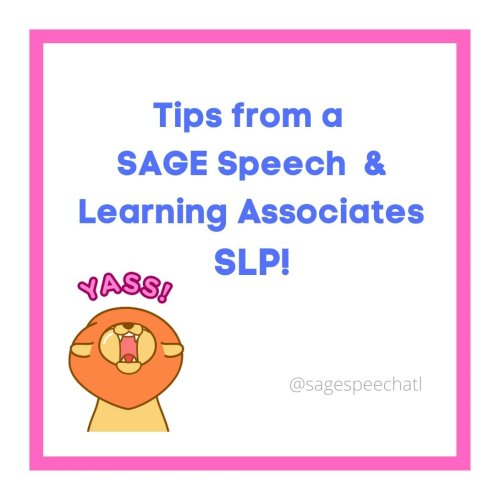Helping Little Voices Grow Big.
Call Us for Speech Therapy in Atlanta
Helping Little Voices Grow Big.
Call Us for Speech Therapy in Atlanta
Eating can be a very challenging and rewarding activity. Just like language, children learn how to eat from their caregivers. Thus, the child should not eat alone but with individuals who can model appropriate mealtime behavior. It is best to have the same foods on your plate as on your child's so that the child can watch your interaction with these foods and gain exposure. Children will eat what they are allowed/what is purchased/kept in the house. As the caregiver, you can help a child become exposed to a variety of healthy foods.
Eating is a socially learned behavior and should be stress free and fun. We offer a desensitization approach that involves the "whole child". This includes all aspects of underlying issues related to eating such as sensory processing, oral motor skills, nutrition, behavior and environmental factors. Instead of demanding consumption and rewarding for swallowing, your therapist will teach you how to engage your child socially with food. Your child will learn about foods in a non-stressful way. Your child will learn to initially play with novel foods, eventually moving towards physical and sensory interactions. These interactions with food will move closer and closer to the face and mouth over time. Your therapist will help you choose foods that are linked by sensory properties (color, shape, size, etc.) to help the child make sense of similarities and differences. The overall goal is to decrease anxiety around meal times and add new and healthy foods to your child's diet.
Does your child have difficulty or picky eating habits?
SAGE Speech & Learning is the ONLY practice in Georgia that is trained and certified to provide the Lidcombe Program for stuttering. Stuttering therapy in Atlanta is scarce, and much…
A compassionate and enthusiastic person who provides one-on-one help in the classroom for a child with diverse needs. A facilitator's goal is for their student to be successful in the…
Speech therapy is the evaluation and treatment of communication and swallowing disorders. Speech and language development usually follows a typical pattern in children. If you have concerns about your child's…
SAGE Speech & Learning strives to provide each family with a welcoming and knowledgeable team of specialists, each uniquely equipped to address the needs of your child. We refer to…
Does he/she have less than 20 foods in his/her diet or excludes whole categories?
Is mealtime difficult often with behaviors such as refusal to try a variety of new foods, crying or gagging?
Is your child losing weight or not gaining enough weight on the growth chart?
1. Have a family meal daily.
2. Discuss other topics, besides food and eating, at the table.
3. Discuss food properties, varieties, preparation, preferences.
4. Model and over-exaggerate biting, scooping, chewing and swallowing.
5. Allow your child to take responsibility in the food preparation and clean up.
6. Child should stay at the table for the entirety of the meal (at least 15 min) even if they are "finished" to gain continued exposure to food.
7. There should be at least 1 "non-preferred" food item on the table/plate at EVERY meal.
8. Child does not have to eat and swallow non-preferred item, but discuss, touch, smell, lick, bite and spit out, etc. This helps with desensitizing the child to foods.
9. Always use positive language and reinforce with language for positive food behavior.

At SAGE Speech & Learning Associates, we know that the best care for our clients comes from a collaborative approach. This…
Read More
At SAGE Speech & Learning Associates, we believe that early intervention is key when it comes to speech and language development,…
Read More
At SAGE Speech & Learning Associates, we are committed to providing personalized and specialized care for every child we serve. We…
Read More
Exploring the Benefits of Speech Generating Devices in Speech Therapy: Insights…
Read More
Has your school considered engaging SAGE Speech & Learning Associates? At SAGE Speech & Learning Associates, we recognize the vital role…
Read More
Fingers crossed, but it seems it that 2021 is shaping up to be a much better school year than 2020. We…
Read More
A Letter From Founder Saren Schapiro M.Sc., CCC-SLP Dear Colleagues, As the year rounds into the second quarter, I am touching…
Read More
Hello Clients and Friends, I want to thank you for being a part of our team in 2020. To have made…
Read More
Discuss with the child out loud/verbally what's coming next--"First we do this, then this, then this, then done/lunch/play/etc" Bundle-up…
Read More
This is a question we never imagined we would have to answer. SAGE Speech & Learning has pivoted to teletherapy services…
Read More